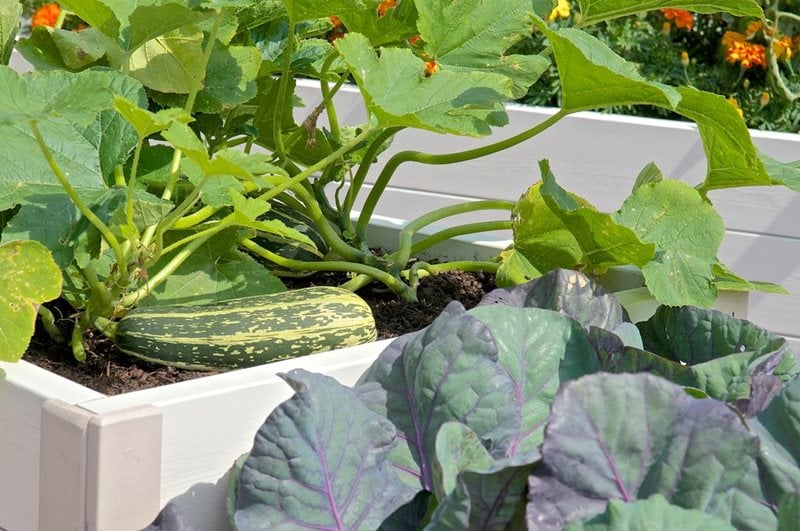Think your veg garden needs a lift? RHS expert Leigh Hunt shares tips on when raised beds are useful

 Growing vegetables in raised beds makes me feel like I’m a good gardener. When I glance across the plot, everything appears to be orderly and that subliminally tells me I’m on top of my veg growing game.
Growing vegetables in raised beds makes me feel like I’m a good gardener. When I glance across the plot, everything appears to be orderly and that subliminally tells me I’m on top of my veg growing game.
That’s often a lie, of course. But even if the carrots are measly and the fennel doesn’t bulb, I’m soothed by the neat patterns.
There’s even some published science behind this which suggests that the brain looks for patterns where none exist. So at least I’m predictable, if not always reasoned.
The rise of raised beds has been phenomenal in the last 30 years. Once they were largely championed at places like the RHS Chelsea Flower Show as an aid to reduce bending down and improve access for all.
By the 1990s, when the Ground Force era of TV garden makeovers was in full swing, these wooden structures had become a designer choice. And it’s this mix of ideas that raised beds are stylish yet practical which has made them a mainstay feature in our veg plots.
 Do I need raised beds?
Do I need raised beds?
Like a lot of garden features, whether you actually need them is another matter. It may come as a shock, but you can grow vegetables just as well in the ground as a raised bed. Rhetoric I know.
What makes vegetables grow is good soil (plus moisture and sunshine). You can have good soil in the ground and good soil in raised beds.
The only time where raised beds are really needed is where the garden soil is waterlogged. By lifting the soil above ground level it will drain and that’s great for permanent crops (such as rhubarb and asparagus) that would otherwise rot in the winter wet.
This also highlights that a wooden frame that contains soil at the same level as the surrounding ground is not a raised bed; and so doesn’t bring these benefits. However, it still looks nicely edged.
If you make a raised bed, you will have to put in more soil to raise the soil level. This leads to those two key questions: what and where from? It is best to fill the bed mainly with soil as it doesn’t break down and slump in a few seasons (unlike garden compost or potting compost).
I’ve pinched soil from borders around the garden and just enriched it with a couple of bucketfuls of manure per square metre. Bagged topsoil is good too; just expensive.
 What about the cost?
What about the cost?
Talking of expense, the price of timber edging has gone through the roof in the last couple of years. However, I’ve found my local recycling centre has a timber shop and they sometimes have ‘pallet collars’.
These four hinged boards are ready made frames that can be stacked to make taller beds. Just apply a water-based wood preservative to make then longer lasting. Alternatively, new sleepers and treated wood don’t contain the nasty chemicals of old so are fine for edible crops – and if you want to be extra cautious you can line with plastic (but this isn’t as desirable as we move away from using plastics too).
My last tip/warning is that raised beds dry out quicker than soil at ground level, so you’ll want to install some water butts at the same time to catch and reuse rainwater this summer. Add to this some summer sunshine and the crops in my orderly raised beds can’t fail to please.
Happy growing!
| |
About the author
Leigh Hunt is a Principal Horticultural Advisor at the RHS and tends a veg patch in his other role of Head Gardener at a private garden. At the RHS, he tackles all the fascinating enquiries from RHS members and is a specialist in the environmental benefits provided by plants.
|
 Pick of the crop
Pick of the crop
Look for the RHS Award of Garden Merit (AGM) when buying vegetable seed or small plants. You can also download the RHS lists of recommended cultivars.

